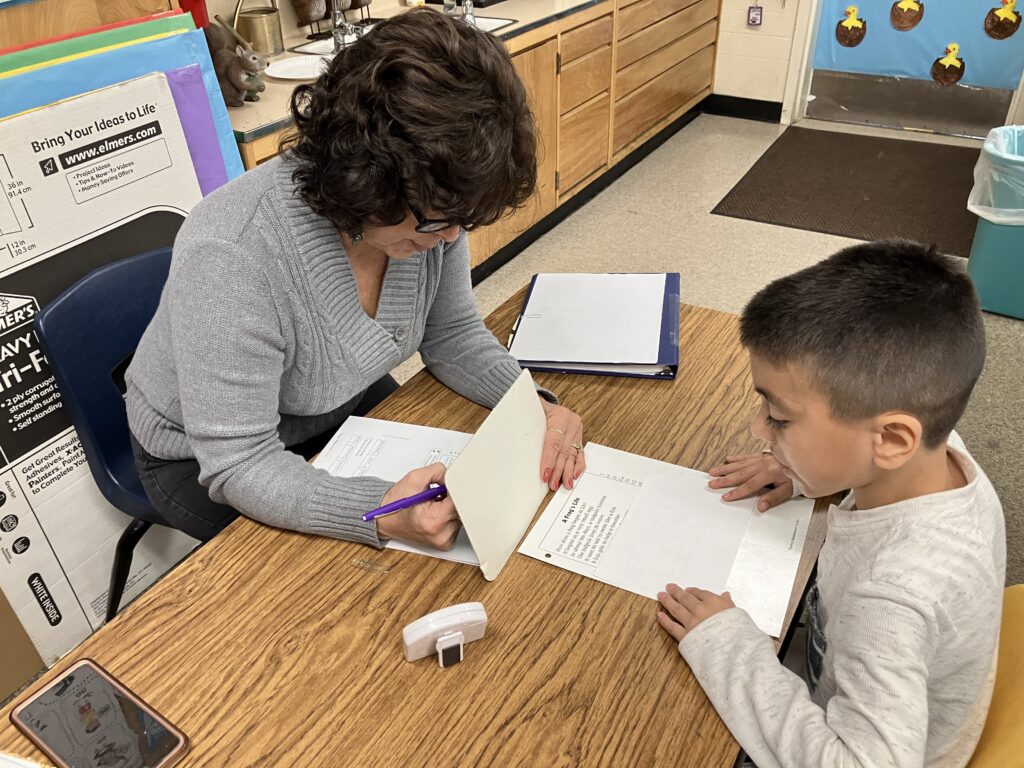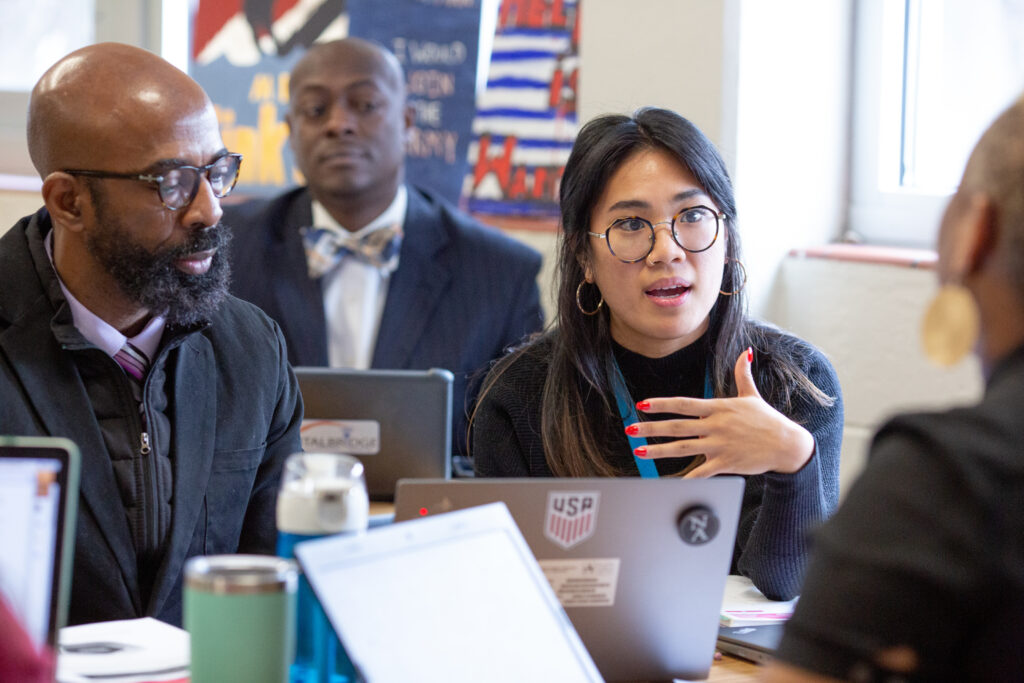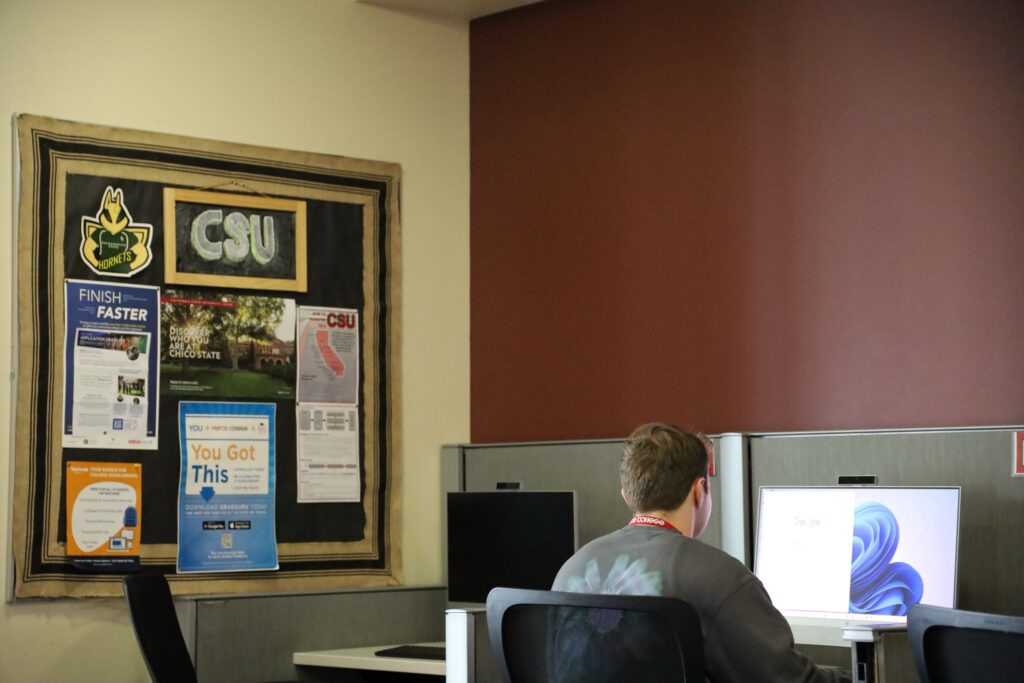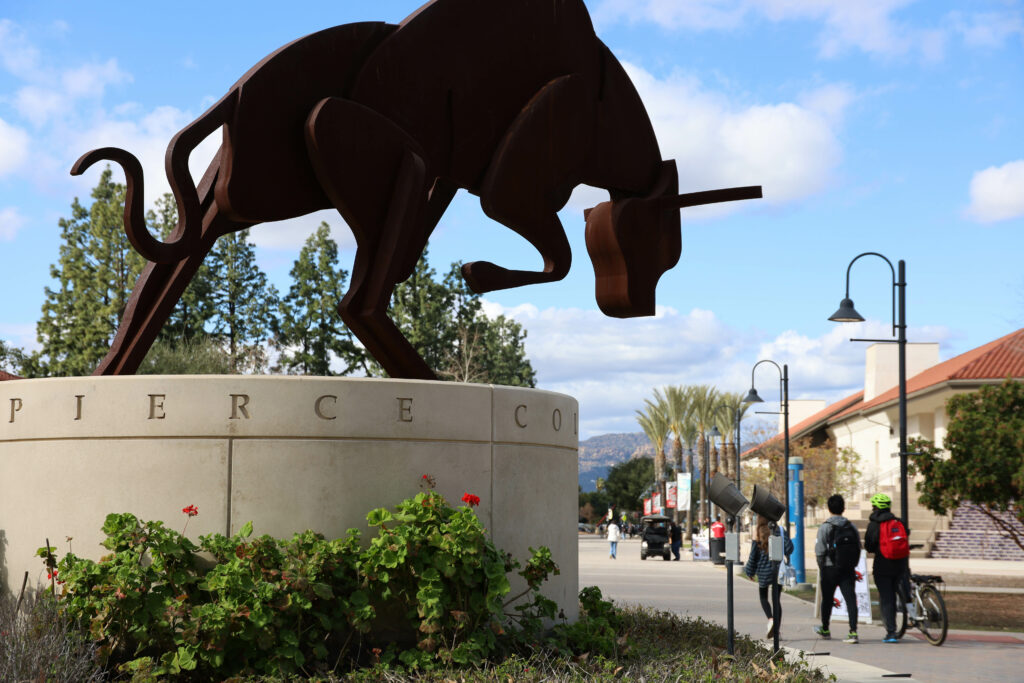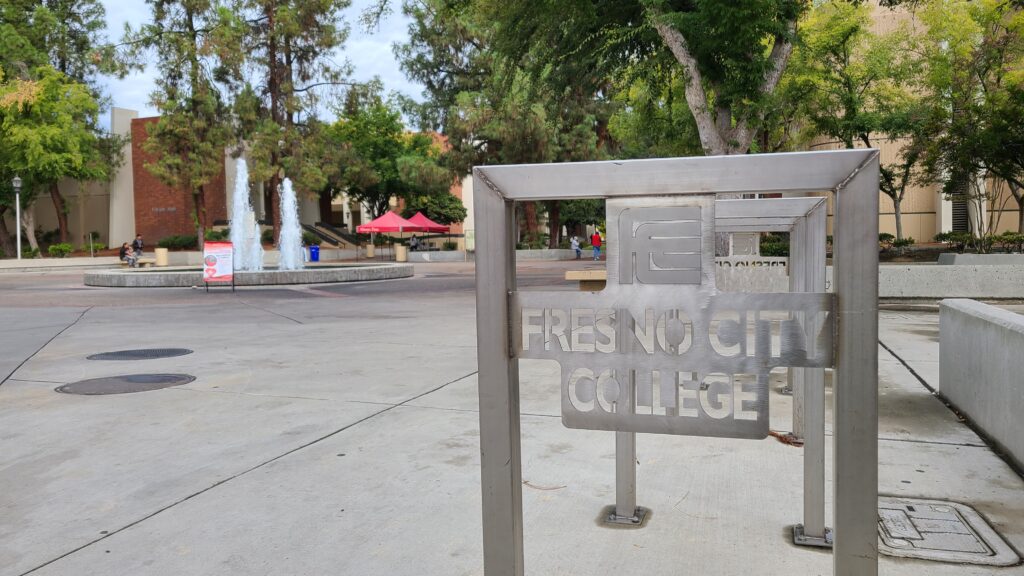
Fresno City College campus
Credit: Ashleigh Panoo / EdSource
A new petition to remove Fresno City College tenured communication instructor Tom Boroujeni from his role as president of the school’s academic senate is circulating among senate members.
It’s the third petition calling for Boroujeni’s removal as president after an EdSource report revealed in November that he was found to have committed an “act of sexual violence” against a professor and colleague at nearby Fresno State in 2015.
Theater design instructor Christina McCollam-Martinez started the current petition on Feb. 12 and has pushed her colleagues to support Boroujeni’s removal.
“I think they’re hoping it all gets swept under the rug and disappears,” McCollam-Martinez said. “It’s not going to happen.”
The academic senate president works with the college’s administration in setting academic policy and hiring faculty and represents the senate and faculty at college, districtwide and public meetings.
Boroujeni is not able to fulfill the duties of president because he is on administrative leave, McCollam-Martinez said in her petition. State Center Community College District, parent agency to Fresno City College, placed Boroujeni on involuntary administrative leave on Nov. 30, a day after EdSource’s report and in response to professors canceling class.
“As there is no set date for his return, the Academic Senate as a body has been severely handicapped, as has the Academic Senate’s voice,” McCollam-Martinez’s petition reads.
McCollam-Martinez urged her colleagues to sign the petition at a February academic senate meeting; she also reminded them to do so via email twice. She’s even sought signatures by displaying the petition alongside other senate documents at meetings, including Wednesday’s.
“I’m just going to keep at it,” she said, adding that she hopes senators recognize the need for Boroujeni’s removal.
According to the senate bylaws, removing an officer requires a written petition detailing the rationale for removal with at least 25% of the senators signing the petition to trigger a vote. If enough senators sign the petition, 50% must be present and 75% of those present must vote to remove Boroujeni as president. The Fresno City College Academic Senate averages around 70 members.
So far, 12 of the required 17 senators have signed the petition to remove Boroujeni in order to “move forward from these current challenges and continue (the Academic Senate’s) valuable work without further disruption.”
Obtaining signatures proves difficult
Since the senate bylaws address the resignation or removal of an officer, but not what to do when an officer is on leave, a petition is the outlined process to remove Boroujeni as president.
Anthropology professor German Loffler submitted the first petition in December, but during a January meeting, Jackie Williams, the senate’s president-elect and acting president, said Loffler withdrew the petition, a statement she has since corrected. According to Williams, Loffler clarified during another academic senate meeting that his petition was not withdrawn but that he stopped collecting signatures because the senate was able to conduct its business.
McCollam-Martinez technically started the second and third petition.
Williams originally told EdSource that the current petition by McCollam-Martinez was the second; however, Williams clarified Thursday that McCollam-Martinez revised the rationale of her first petition. It would have been more accurate to say that she was the second petition writer, Williams said.
Obtaining signatures has been the greatest challenge.
The second petition by McCollam-Martinez argued that Boroujeni be removed because of the allegations against him as well as his inability to demonstrate professionalism and ethics, among other reasons.
“Everything that’s been happening has been affecting the respectability of the Academic Senate as a whole,” McCollam-Martinez said about the rationale in the second petition.
She learned that many senators didn’t — and wouldn’t — get on board with the language, in part because the sexual misconduct investigation reported by EdSource wasn’t public knowledge.
The Nov. 29 EdSource story included Fresno State’s justification for releasing a redacted copy of the act-of-sexual-violence report under the state’s Public Records Act. The report said, “Given that Mr. Boroujeni remains active in the educational community and is teaching at a local community college, there is strong public interest in knowing that a college instructor has been previously found to have committed an act of sexual violence at another university.”
Still, some faculty remain hesitant to sign, McCollam-Martinez said.
She likened resistance from some faculty members to an ostrich sticking its head in the sand to avoid facing problems or the truth.
“For whatever reason, they don’t want to cause any turmoil, so instead of doing anything, they shove their heads in the sand,” she said.
Another explanation for the lack of support, McCollam-Martinez said, is that some senators may not want to sign the petition if their department faculty do not agree.
Meanwhile, Fresno City investigations continue
Three other women at Fresno City College filed complaints against Boroujeni, who characterized them as allegations of “gender discrimination.” When the community college district put Boroujeni on paid administrative leave following EdSource’s report, the district launched an investigation as well.
The investigations continue, according to district spokesperson Jill Wagner in mid-February. She said she couldn’t discuss the complaints or Boroujeni’s administrative leave because they are personnel matters.
“Investigations take time,” Wagner said. “When they are resolved, we don’t necessarily talk about it because it’s still a human resources matter.”
Boroujeni has taught at City College since 2015, the same year he began his academic career at Fresno State as a graduate student and adjunct instructor. The alleged victim is also a professor and Boroujeni’s colleague at Fresno City College.
Fresno State opened its investigation based on the federal anti-discrimination law known as Title IX, records show. The investigation determined that Boroujeni committed an “act of sexual violence” in 2015. Fresno State made its findings in 2020 when he worked as an instructor at City College and Fresno State.
The State Center Community College District learned of the sexual misconduct investigation when the alleged victim requested a no-contact order against Boroujeni, which was granted in the spring 2022 semester. There was no communication between the schools about the matter until the request for the stay-away order.
The Fresno State case was not taken into account as Boroujeni achieved tenure and became senate president at Fresno City College in 2023, even after the district investigated the request for a stay-away order and found that sexual violence occurred.
Urging her academic senate colleagues at Fresno City College to support Boroujeni’s removal, McCollam-Martinez said her latest petition includes irrefutable facts: Boroujeni cannot fulfill his duties as president because he is on administrative leave.
Even if the 17 signatures are gathered to trigger the vote for Boroujeni’s removal, senators must “stand for something” in order to meet the 75% required vote, she said.
“The problem’s not going to go away,” she said. “The vote is not going to do anything unless they take their head out of the sand and stand for something.”

